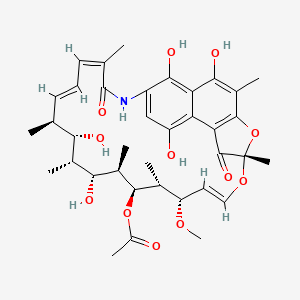
|
Rifamycin SV |
Rifamycin SV is a lipid of Polyketides (PK) class. Rifamycin sv is associated with abnormalities such as Cholestasis, Infection, Dysentery, Soft Tissue Infections and Osteomyelitis. The involved functions are known as Uptake, Excretory function, Drug Kinetics, inhibitors and anaphylaxis. Rifamycin sv often locates in Hepatic, Blood, soluble, Entire gastrointestinal tract and Membrane. The associated genes with Rifamycin SV are SLCO1C1 gene, SLCO1B1 gene, ABCB11 gene and SLC10A1 gene. |
287 |
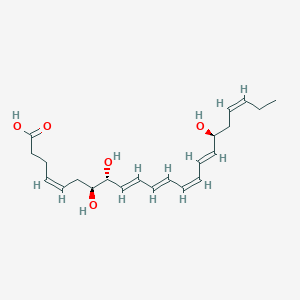
|
Resolvin d1 |
Resolvin d1 is a lipid of Fatty Acyls (FA) class. |
305 |
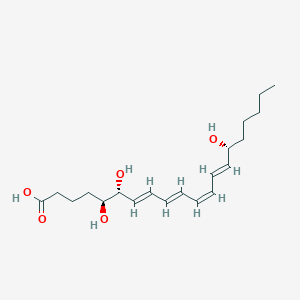
|
15-epi-lxa4;15r-lxa4 |
15-epi-lxa4;15r-lxa4 is a lipid of Fatty Acyls (FA) class. 15-epi-lxa4;15r-lxa4 is associated with abnormalities such as Pneumonia, Septicemia, Cystic Fibrosis, Subarachnoid Hemorrhage and Obesity. The involved functions are known as Protective Agents, Signal Transduction, cytokine biosynthesis, Inflammation and Anabolism. 15-epi-lxa4;15r-lxa4 often locates in Blood, Immune system and Heart tissue. The associated genes with 15-epi-lxa4;15r-lxa4 are IL2 gene, CXCL13 gene and CMKLR1 gene. The related lipids are Steroids. The related experimental models are Knock-out. |
305 |
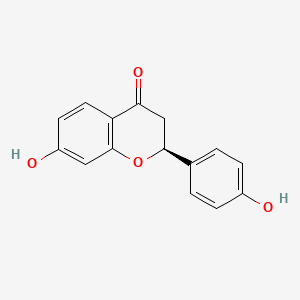
|
Liquiritigenin |
Liquiritigenin is a lipid of Polyketides (PK) class. Liquiritigenin is associated with abnormalities such as POSTMENOPAUSAL SYNDROME, Hyperostosis, Diffuse Idiopathic Skeletal, PARAGANGLIOMAS 2, Wiskott-Aldrich Syndrome and Alzheimer's Disease. The involved functions are known as Heterodimerization, Transcription, Genetic, Ligand Binding, Transcriptional Activation and Anabolism. Liquiritigenin often locates in Membrane, Blood, Microsomes, Liver, Microsomes and Body tissue. The associated genes with Liquiritigenin are Candidate Disease Gene, IMPACT gene, TNFSF10 gene, SLC33A1 gene and P4HTM gene. The related lipids are Lipopolysaccharides, pregnenolone sulfate and FuGene. The related experimental models are Xenograft Model. |
313 |
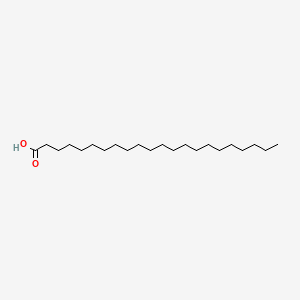
|
Docosanoic acid |
Docosanoic acid is a lipid of Fatty Acyls (FA) class. Docosanoic acid is associated with abnormalities such as Liver diseases, Hypertensive disease, Diabetes, Cardiovascular Diseases and Hereditary Diseases. The involved functions are known as Anabolism, Insulin Resistance, Oxidation, Biochemical Pathway and Signal. Docosanoic acid often locates in Hepatic, Microsomes, Microsomes, Liver, peroxisome and Mitochondria. The associated genes with Docosanoic acid are ALDH3A2 gene, CYP4F3 gene and ABCD1 gene. The related lipids are Stearic acid, palmitoleic acid, Fatty Acids, 17-octadecynoic acid and Fatty Acids, Unsaturated. |
350 |
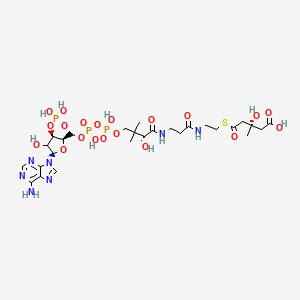
|
HMG-CoA |
Hmg-coa is a lipid of Fatty Acyls (FA) class. Hmg-coa is associated with abnormalities such as Cardiovascular Diseases, Hypercholesterolemia, Metabolic Diseases, Hyperhomocysteinemia and Morphologically altered structure. The involved functions are known as ketone body biosynthetic process, Regulation, Mutation, enzyme activity and HMG-CoA synthase activity. Hmg-coa often locates in Mitochondria, Cytoplasmic matrix, Hepatic, Membrane and Flank (surface region). The associated genes with HMG-CoA are Human gene, HMGCS2 gene, PPARA gene, ACSL1 Gene and Candidate Disease Gene. The related lipids are Fatty Acids, Sterols, Dehydrocholesterols, Lipopolysaccharides and 7-dehydrocholesterol. |
355 |
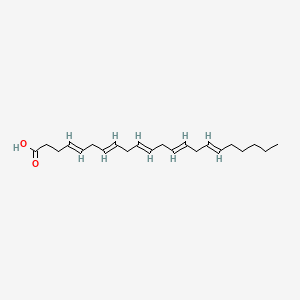
|
4,7,10,13,16-docosapentaenoic acid |
4,7,10,13,16-docosapentaenoic acid is a lipid of Fatty Acyls (FA) class. |
546 |
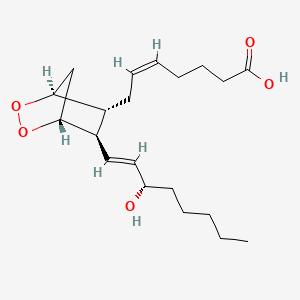
|
PGH2 |
Pgh2 is a lipid of Fatty Acyls (FA) class. The involved functions are known as peroxidase activity, Synthesis and prostaglandin biosynthesis. Pgh2 often locates in Skeletal system. The associated genes with PGH2 are Homologous Gene. |
701 |

|
PE(15:0/20:0) |
PE(15:0/20:0) is a lipid of Glycerophospholipids (GP) class. Pe(15:0/20:0) is associated with abnormalities such as Exanthema, Infection, Painful Bladder Syndrome, Obesity and Fatty Liver. The involved functions are known as conjugation, Transcription, Genetic, Sinking, Autophagy and Protein Biosynthesis. Pe(15:0/20:0) often locates in membrane fraction, soluble, Membrane, Body tissue and Tissue membrane. The associated genes with PE(15:0/20:0) are GABARAPL2 gene, ATG10 gene, ATG12 gene, SLC33A1 gene and GABARAP gene. The related lipids are Liposomes, Lipopolysaccharides, Phosphatidylserines, Membrane Lipids and Cardiolipins. The related experimental models are Knock-out and Cancer Model. |
723 |
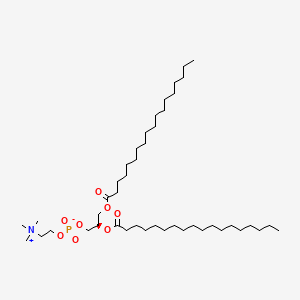
|
816-94-4 |
816-94-4 is a lipid of Glycerophospholipids (GP) class. 816-94-4 is associated with abnormalities such as Gigantism, Pulmonary Hypertension, Neutropenia, Serum Sickness and Urticaria. The involved functions are known as pulmonary effects, Hemodynamics, Stereochemistry, Host defense and Blood Circulation. 816-94-4 often locates in vesicle, Blood, biological membrane, soluble and Cardiopulmonary. The associated genes with 816-94-4 are pentaglobulin, EMILIN1 gene and FASTK Gene. The related lipids are Liposomes, dimyristoylphosphatidylglycerol, Lipopolysaccharides, Unilamellar Liposomes and Unilamellar Vesicles. |
828 |









